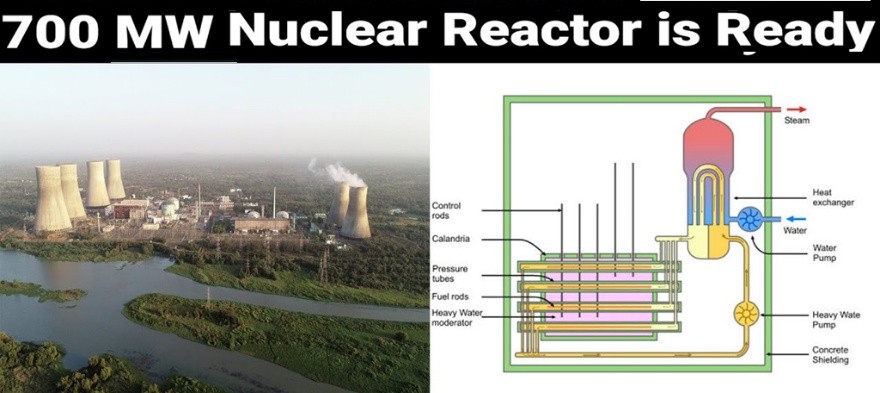PREVIOUS
700 MWe PHW Reactors
July 12 , 2025
17 hrs 0 min
28
0
- The Atomic Energy Regulatory Board (AERB) recently granted a 5-year operation licence for two indigenously developed 700 MWe Pressurised Heavy Water Reactors at the Kakrapar Atomic Power Station (KAPS) in Gujarat.
- It marks a significant boost to NPCIL’s plan of building 10 more PHWRs of 700 MWe.
- NPCIL owns and operates all nuclear power plants in India, except PFBR variants.
- PFBR variants are owned by the Indira Gandhi Centre for Atomic Research.
- India currently operates 15 PHWRs of 220 MWe, 2 PHWRs of 540 MWe.
- It already has a 700 MWe reactor at Rawatbhata, Rajasthan
- PHWRs are a type of nuclear reactor that uses heavy water (deuterium oxide, D₂O) as both a coolant and moderator.
- Natural or slightly enriched uranium serves as fuel for this.
- AERB is India's national regulatory authority responsible for ensuring the safe use of nuclear energy and radiation technologies in the country.
- AERB was established in 1983 under the Atomic Energy Act 1962.
- It functions as an independent body under the Department of Atomic Energy (DAE).
- India’s nuclear power capacity is currently 8.18 GW.
- Its targets are set at 22.48 GW by 2031–32 and 100 GW by 2047.

Leave a Reply
Your Comment is awaiting moderation.


